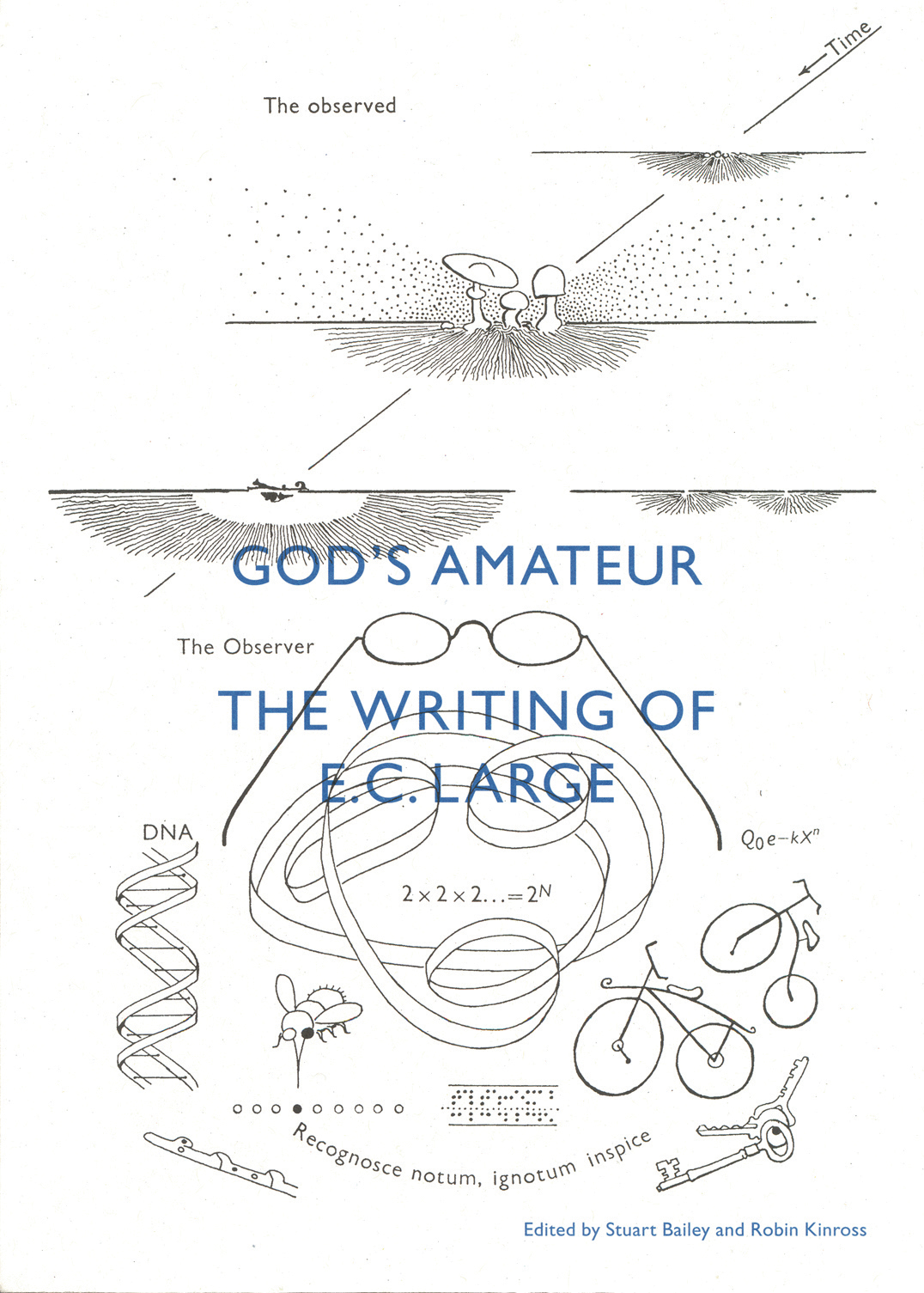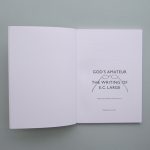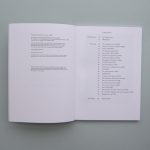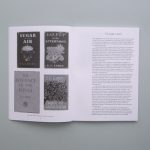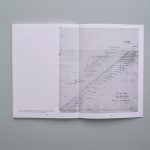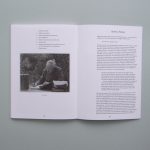A book of and about E.C. Large, which contains a selection of his shorter writings – travel essays, reportage, reveries, reviews, critiques, autobiographical pieces – and which reveals the extent of his achievement. These show a notably exact writer, with sane no-nonsense views, and yet with great imagination. Some unpublished texts are shown in facsimile. Also here is a bibliography of his published writings (both ‘literary’ and scientific), and an essay by Stuart Bailey, which sees his work with present-day eyes.
Contents
Robin Kinross:
E.C. Large in print
Bibliography
E.C. Large:
On watching an onion (1930)
Notes on the story of Metame (1930)
Escape, 1918 (1933)
The adequate tigers (1933)
Our modern Hesiod (1933)
Journey through Denmark (1934)
St Thomas De Quincey (1935)
Hypnagogic hallucinations (1936)
The Stour Valley (1937)
Ten thousand faces (1937)
Children on the Mappin Terrace (1937)
Hail! (1937)
Into open formation (1937)
OHMS (1937)
In defence of Mr Baldwin (1937)
The Coronation Mass-Observed (1937)
The ten commandments (1938)
On the Yorkshire Moors (1938)
The semantic discipline (1938)
Easter 1939 (1939)
Memorandum: The advance of the fungi (1939)
For the Duke of Bedford, with unkind regards (c.1955)
Biographical note (1973)
Stuart Bailey:
Science, Fiction
Reviews
Sometimes the best stuff has been out there all along, waiting to be rediscovered and saved from obscurity. When Stuart Bailey (‘Dot Dot Dot’; Dexter Sinister) and Robin Kinross of Hyphen Press, both of whom usually focus on design and typography, decided to release facsimile editions of E.C. Large’s novels ‘Sugar in the air’ (originally published in 1937) and ‘Asleep in the afternoon’ (1938), they rescued a long-forgotten literary treasure whose ‘peculiar charm’ is indeed ‘difficult to pinpoint’, as Stuart Bailey states. It could be the understated precision of Large’s prose, his rather plain style, the modesty about it. It could be the intricate connection between the two novels, the latter being a metasequel to ‘Sugar in the air’ that ‘continues, duplicates, and mirrors it all at once’, as Bailey writes in his essay ‘Science, fiction’ (which is included in ’God’s amateur’, a companion to the works of Large, also released by Hyphen Press). It could also be the fact that these ‘scientific romances’ are not the kind of writing you’d expect from books published in the otherwise rather low-modernist (read: boring, unimaginative) 1930s, or how that strangely unassuming level of convolution doesn’t come off as mere playfulness. It could also be the protagonist himself, a man called Pry, who is – like Large, who was, successively, an industrial chemist, a writer, and a plant scientist ‘driven (not to say condemned) by a compulsion to identify local defects – “What exactly is going on here?” ’ While it’s probably all of the above, we have to say that E.C. Large certainly knew how to create a proper page-turner. You simply HAVE to read on. You want to know more about Pry’s fate, his respective projects’ fate, whether it is extracting sugar from the air or writing one of these novels (which, apart from sugar and novels, actually deal with a lot of things: the mass-market, design issues, love, sleep, bureaucratic absurdities) as if the paper was in fact sugar-coated.
RNK, Lowdown [Berlin], no. 74, December 2010 – January/February 2011
